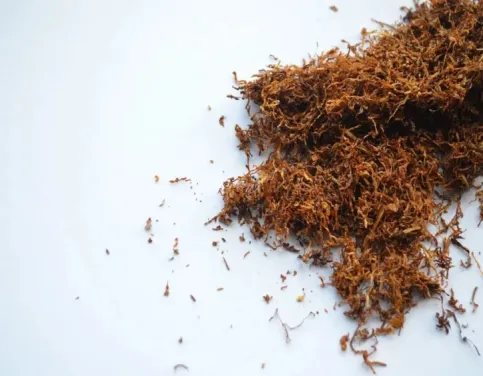Tobacco's Invisible Analyst: How NIR Spectroscopy Revolutionizes Tobacco Manufacturing Introduction
Oct 09, 2025
Tobacco's Invisible Analyst: How NIR Spectroscopy Revolutionizes Tobacco Manufacturing Introduction
Near-infrared (NIR) spectroscopy has transformed tobacco manufacturing by replacing slow, destructive laboratory methods with rapid, non-destructive analysis. This advanced technology leverages molecular vibrations in the 900-1700 nm spectral range to provide comprehensive chemical characterization while preserving sample integrity.
Scientific Foundation
NIR spectroscopy operates on the principles of molecular overtone and combination vibrations, primarily analyzing C-H, O-H, and N-H chemical bonds. When tobacco samples are exposed to NIR radiation, these molecular bonds absorb specific wavelengths characteristic of their chemical composition. Advanced chemometric models including partial least squares (PLS) regression and principal component analysis (PCA) enable precise quantification of multiple parameters simultaneously without chemical reagents or sample destruction.
Analytical Performance
Modern NIR systems demonstrate exceptional analytical capabilities across all critical tobacco quality parameters:
Table 1: NIR Analytical Performance Specifications
|
Parameter |
Measurement Range |
Accuracy |
R² |
Primary Wavelengths |
|
Nicotine |
1.0-4.2% |
±0.12% |
0.986 |
1,200-1,300 nm |
|
Reducing Sugars |
14.8-25.3% |
±0.28% |
0.974 |
1,400-1,500 nm |
|
Moisture |
10.8-13.2% |
±0.14% |
0.992 |
1,450 nm |
|
Total Nitrogen |
1.5-3.8% |
±0.15% |
0.953 |
1,490-1,520 nm |
Process Optimization
NIR technology has revolutionized tobacco curing processes through real-time monitoring of biochemical conversions. During flue-curing, systems track starch-to-sugar conversion through characteristic spectral changes at 1,580-1,620 nm, enabling dynamic adjustment of temperature and humidity parameters. This optimization has demonstrated 23% improvement in conversion efficiency compared to traditional methods while reducing energy consumption through precise process control.
Quality Control Integration
The technology is implemented at multiple critical control points throughout the production chain. Automated NIR systems classify incoming tobacco leaves by chemical composition at receiving stations, guide proportional mixing during blending operations, and ensure final product compliance with regulatory requirements. This integrated approach maintains consistent chemical profiles that meet brand specifications.
Validation and Standardization
NIR systems meet ISO 12099 standards through rigorous validation protocols demonstrating exceptional performance metrics:
Repeatability: <0.5% relative standard deviation
Reproducibility: <1.2% between-instrument variation
Long-term stability: <0.3% annual signal drift

Technical and Economic Advantages
The implementation of NIR spectroscopy represents a paradigm shift from intermittent quality checking to continuous process optimization:
Table 2: Technical and Economic Comparison
|
Parameter |
Traditional Methods |
NIR Spectroscopy |
Improvement |
|
Analysis Time |
4-6 hours |
8-15 seconds |
99.9% reduction |
|
Consumable Costs |
$12-18/sample |
$0.20-0.30/sample |
98% reduction |
|
Daily Throughput |
20-30 samples |
500-800 samples |
2,400% increase |
|
Measurement Precision |
±5-10% error |
±1-3% error |
300% improvement |
This technological advancement enables tobacco manufacturers to maintain exceptional product consistency while significantly reducing production costs and minimizing waste. The non-destructive nature of NIR analysis preserves material value while providing immediate feedback for process adjustments, establishing it as a cornerstone technology for modern tobacco manufacturing quality assurance.
